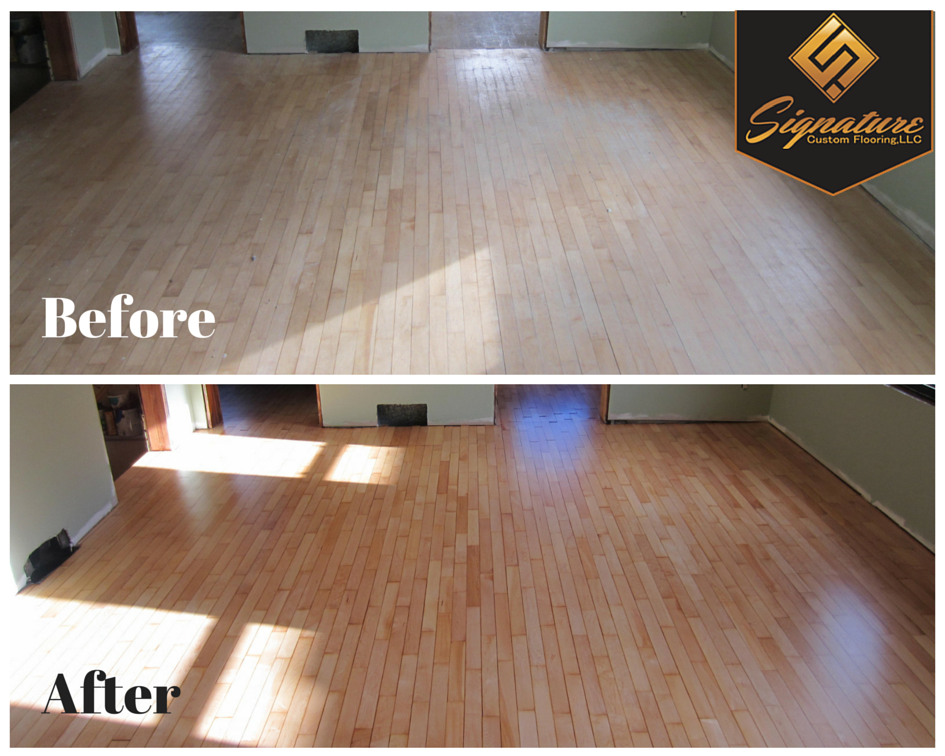What They Don't Tell You About Having Your Hardwood Floors Refinished
Posted by Aaron Schaalma

Hardwood floors have become very popular over the last 10 years; they even increase the value of homes. Not only are wood floors easy to clean, but they hold less germs than carpets. After about 10 years, hardwood floors begin to show their age, whether it be from dings, scratches or general wear from walking and moving about. If you want to restore your floors’ shine or change the finish color, refinishing is a great option. So where do you start when it’s time to get your hardwood floors refinished?
Research
Make sure you have an experienced contractor working with the floors, like us. Talk with the contractor about the potential extra fees that could arise during the refinishing process, along with a price quote. Check out previous work the contractor has done, either by visiting their website, social media sites or showroom to see examples. Check if the contractor is a NWFA certified sand & finisher. If the refinishing job isn’t done properly, you will end up paying more money to fix it later.
Length of Process
The length of the finishing process is dependant on many factors including the amount of floor that needs work, type of finish used, humidity and weather conditions. Water-based finishes normally take two days to apply, while oil-based finishes normally take up to three days. From the initial sanding until you can bring your furniture back into the room, it can take about five days.
The Great Dust Bowl
No matter how good the contractor, there will be some dust in the air while the finish process takes place because sanding floors churns up a lot of dust. Dust-efficient sanders don’t mean that they’re dust proof. It is important to cover paintings or anything of value hanging on your walls. The finish can’t be applied to the floor until all of the wood dust is removed from it. Most of the dust is contained in the area being sanded. Before the final coat is applied, the contractor should vacuum baseboards and trim window seals to ensure a clean look. Dust can be an allergen to some, so keep that in mind before choosing to stay in your home during the refinishing process.
Should I Stay or Should I Go?
If multiple rooms are being refinished, it is best that you and your family stay elsewhere during the process. A room must be furniture-free before the contractor can get to work. If there are two or three rooms being refinished, furniture will have to be stored in other rooms or even outside (depending on the weather). If most of your home is being refinished, you’ll have to move furniture Tetris-style from room to room so it doesn’t interfere with the contractor’s work.
When you decide to refinish your floors, make sure you do your research, trust your contractor, expect the job to take about five days and decide whether you want to stay in your home while the refinishing process is happening. To learn more about refinishing wood floors or how to protect them, call (920) 279-7871 or visit our website.



